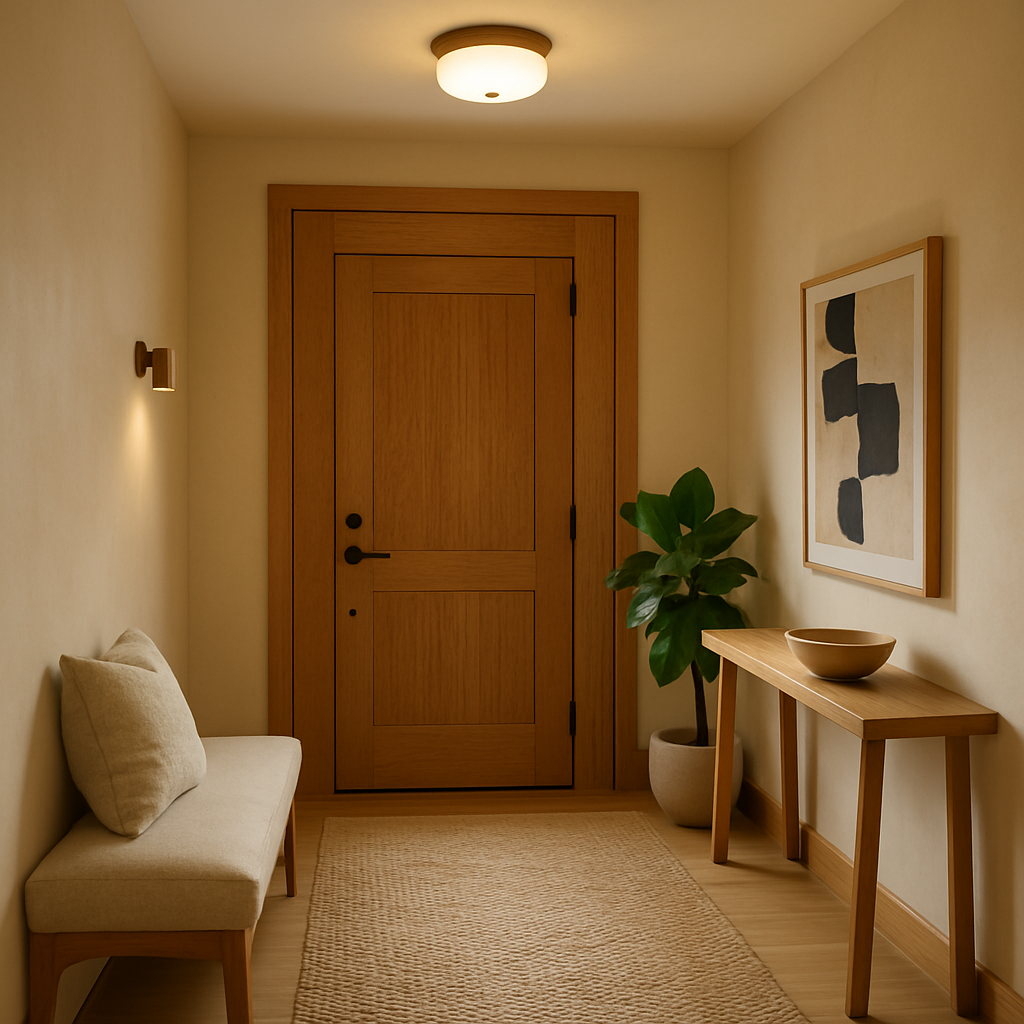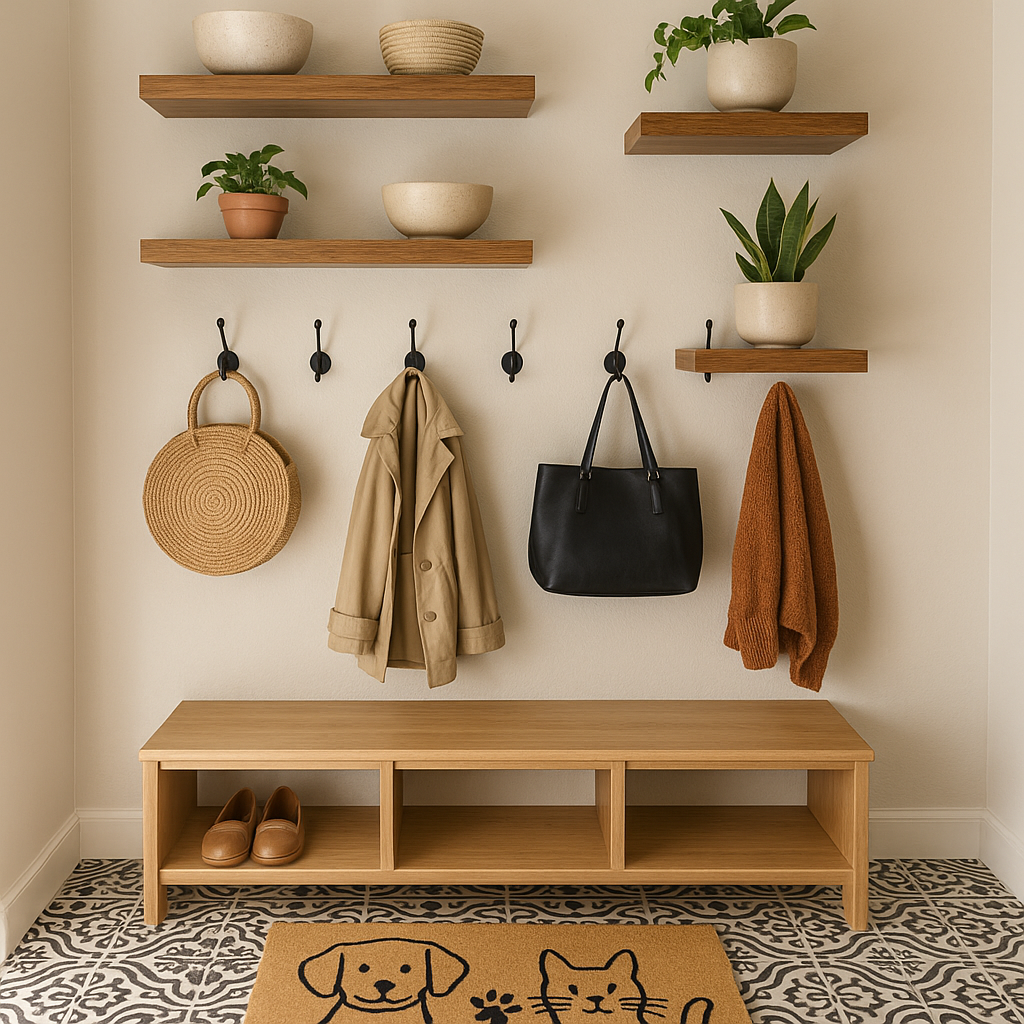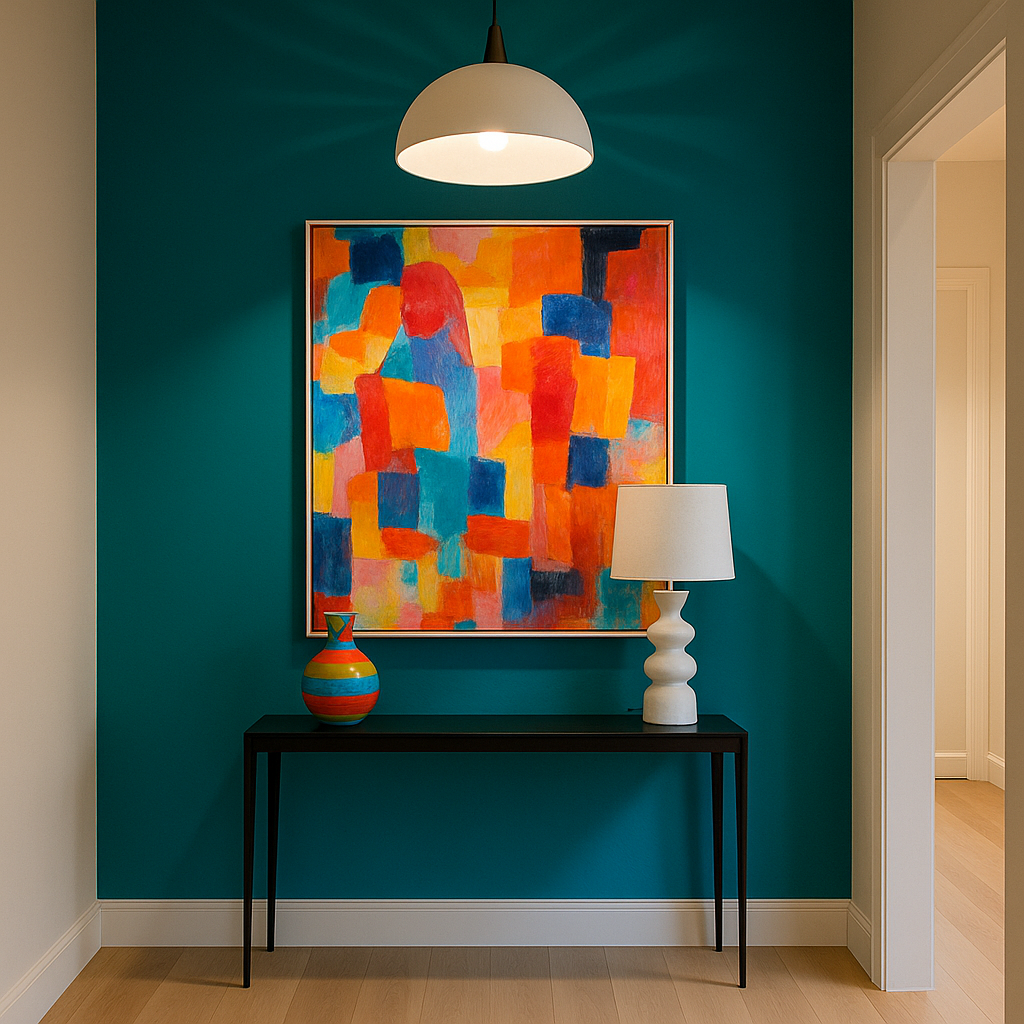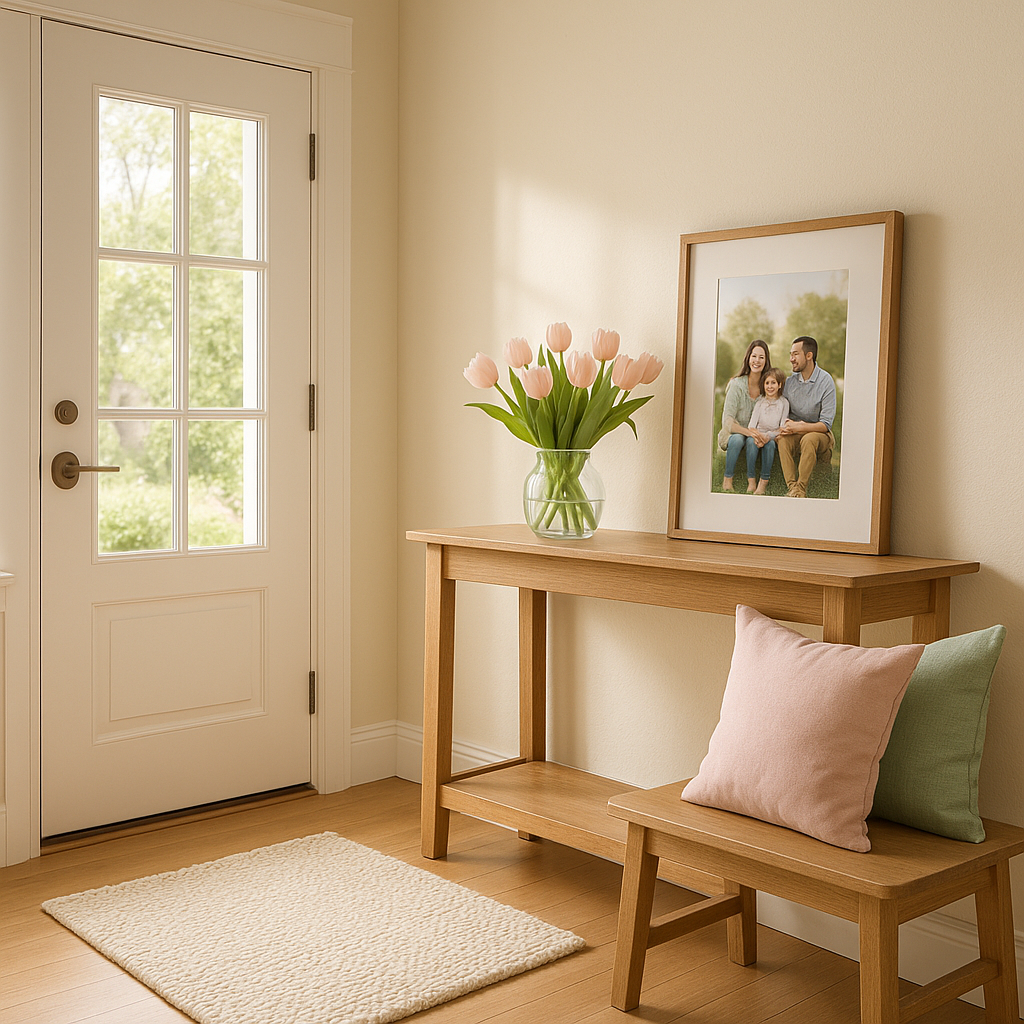
Creative Home Entryway Ideas to Greet Your Guests with Style
Share
Your entryway isn't just a transitional space—it's the opening chapter of your home's story. This often overlooked area sets the tone for your entire living space, creating that crucial first impression that welcomes both guests and residents alike. Whether you have a grand foyer or a modest apartment nook, your entryway deserves thoughtful attention that balances style, function, and personality. In today's design-conscious world, personalization stands as the ultimate expression of your unique taste and lifestyle needs. From color choices to clever storage solutions, we'll explore fresh and inventive ways to transform your entrance into a space that not only wows visitors but enhances your daily coming and going experience—regardless of your budget or square footage.
Setting the stage – the psychology of a welcoming entryway
The moment someone steps through your front door, their brain begins processing subtle cues about your home and, by extension, your personality. This psychological first impression happens within seconds and often sets the emotional tone for the entire visit. A thoughtfully designed entryway creates a transitional buffer between the outside world and your private sanctuary, allowing both guests and residents to decompress and shift mindsets.
Interior designers often point to the concept of "transitional spaces" as crucial for mental wellbeing. According to environmental psychology principles, these in-between areas help us adjust from one context (public) to another (private), making a well-designed foyer not just aesthetically pleasing but emotionally supportive. Creative home entryway ideas that incorporate warmth through lighting, color, and texture can trigger the brain's relaxation response, immediately signaling "you're welcome here."
Consider how stylish entryways in high-end hotels make you feel—there's an immediate sense of anticipation and comfort. By applying some of these same principles, your home's entrance can create similar positive emotional associations. Elements like appropriate lighting (neither too harsh nor too dim), natural materials that appeal to our innate biophilia, and personal touches that tell your story all contribute to this welcoming psychology.
Functional foundations – entryway organization and storage solutions
Even the most beautifully designed entrance will quickly lose its appeal if it can't handle the everyday realities of coming and going. The secret to maintaining stylish entryways lies in thoughtful organization that anticipates your household's specific needs.
Start by assessing what typically accumulates in your entrance area—shoes, coats, bags, keys, mail—and design storage solutions accordingly.
Wall-mounted systems keep floors clear while maximizing vertical space. Consider options like floating shelves paired with decorative hooks, cubbies labeled for each family member, or a streamlined console table with designated drawers for smaller items.
Multifunctional furniture pieces offer entryway storage solutions without compromising style. Benches with hidden storage compartments provide seating for putting on shoes while concealing seasonal items. Slim console tables with drawers offer landing spots for keys and mail while displaying decorative elements. Even umbrella stands can become statement pieces with the right design.
For households with children or pets, incorporating washable materials and dedicated "drop zones" for backpacks, leashes, and sports equipment helps maintain order. Add a custom photo doormat featuring your pet as both a practical dirt-trapper and an immediate conversation starter that reflects your household's personality.
Smart tips for small spaces
Limited square footage demands creative problem-solving for entryway organization. In apartment entryways or narrow hallways, think vertically and embrace minimalism:
- install narrow floating shelves at staggered heights for visual interest and functional storage
- utilize wall space with decorative hooks or peg systems that can hold everything from coats to bags
- select a slim bench or narrow console table (under 12 inches deep) to maintain clear pathways
- incorporate mirror-fronted storage to visually expand the space while hiding clutter
- choose light colors and reflective surfaces to create an airier feel
- consider fold-down or wall-mounted tables that can be collapsed when not needed
Professional organizers often recommend the "one in, one out" rule for small entryways—for every new seasonal item brought into the space, something else should be stored away. This prevents overwhelming a compact area while maintaining its functional integrity throughout changing weather and activities.
Statement decor – personalizing with color, art, and lighting
While functionality forms the foundation of a great entryway, it's the decorative elements that truly transform it into a reflection of your personal style. The entrance offers a perfect opportunity to make bolder choices than you might elsewhere, setting a memorable tone from the moment the door opens.
Color serves as one of the most powerful tools in your entrance design arsenal.
While neutral palettes create timeless elegance, don't shy away from statement hues that energize the space. Consider painting just one accent wall in a vibrant tone, or introduce color through textiles and accessories that can be easily switched seasonally. An entryway color palette doesn't have to match your entire home—it can serve as an intriguing introduction to your style story.
Artwork makes an immediate statement about your aesthetic sensibilities. Whether you opt for a single large-scale piece, a carefully curated gallery wall, or three-dimensional sculptural elements, artistic touches elevate the entrance beyond mere functionality. For high-impact creative entryway ideas, consider oversized textile art, illuminated wall sculptures, or even a dramatic wallpaper treatment that serves as art itself.
Lighting deserves special attention in entryway design, as it dramatically affects both functionality and mood. Layer your lighting approach with:
- ambient lighting from ceiling fixtures that adequately illuminate the entire space
- task lighting near mirrors or key areas where you need focused illumination
- accent lighting to highlight architectural features or artwork
- decorative fixtures that make their own design statement
Statement entryway lighting—whether a dramatic pendant, an artistic floor lamp, or a collection of wall sconces—can become the defining element that sets your entrance apart. Fixtures that cast interesting shadow patterns add another dimension to your design while using natural wood for a warm, stylish space grounds the area with organic texture.
Trending styles for 2025
Forward-looking modern entryway design embraces several emerging trends worth considering:
- biophilic elements that bring nature indoors through materials, patterns, and actual plants
- curved and arched doorways and architectural details that soften transitions
- mixed material compositions combining wood, metal, stone, and textiles for tactile interest
- statement floors with patterned tiles, painted designs, or two-tone treatments
- maximalist wallpaper in unexpected places like ceilings or inside closets
- vintage pieces reimagined with contemporary finishes or used in unexpected ways
- sculptural lighting that functions as art even when not illuminated
These trending approaches to entrance design embrace both aesthetic pleasure and practical functionality, creating spaces that feel current while remaining livable. The most successful stylish entryways incorporate trends selectively, mixing them with timeless elements for longevity.
Furniture, fixtures, and layout – marrying comfort with style
The physical components you select for your entrance area must balance visual appeal with genuine usability to create a truly successful space.
When selecting entryway furniture, consider the daily choreography of your household's comings and goings. A bench offers convenient seating for shoe changes while console tables provide landing spots for essentials. For families with children, lower hooks and cubbies encourage independence and organization. Pet owners might incorporate dedicated storage for leashes, toys, and paw-cleaning supplies that doesn't compromise the area's aesthetic appeal.
Material selection plays a crucial role in longevity—entrances endure heavy traffic and exposure to outdoor elements. Opt for durable surfaces that resist scratches and moisture: hardwood with protective finishes, powder-coated metals, performance fabrics, and natural stone or porcelain tiles. These materials can withstand daily use while maintaining their appearance with minimal maintenance.
Scale and proportion demand careful attention in entrance design. Too-large pieces in small spaces create obstacles, while undersized elements in grand foyers appear disconnected. Measure your available space precisely, accounting for door swings, traffic patterns, and any architectural features. Allow approximately 36 inches of clear pathway for comfortable movement, and consider how furniture placement affects the natural flow between rooms.
For a welcoming entrance that feels intentional rather than accidental, incorporate these designer-approved elements:
- a designated landing zone for keys, phones, and everyday essentials
- seating that invites a moment of transition
- appropriate scale lighting that functions practically and aesthetically
- mirror placement that reflects light and allows for last-minute appearance checks
- a soft surface underfoot via rugs or runners that define the space
- personal elements that connect to your household's identity
Zoning, flow, and architectural features
Even homes without dedicated foyers can establish distinct entrance zones through thoughtful design strategies. Area rugs create visual boundaries, while furniture groupings or decorative screens physically define the space. In open layouts, consider using a different paint color, wallpaper, or ceiling treatment to distinguish the entrance from adjacent areas.
When working with challenging architectural features, transform potential liabilities into assets. Embrace awkward angles with custom storage solutions, highlight unusual ceiling heights with dramatic lighting, or enhance narrow passages with mirrors and proper illumination. Every architectural quirk offers an opportunity for creative problem-solving that results in a uniquely personalized welcome.
For those with pets, incorporating a doormat with pet's photo—no need to knock adds both functionality and personality to your entrance. These customized elements perform the practical task of trapping dirt while bringing smiles to visitors and reflecting your household's character.
Seasonal and personalized touches – reflecting personality all year
Your entryway presents the perfect canvas for expressing seasonal shifts and personal stories that evolve throughout the year. Refreshing these elements periodically keeps your welcome feeling current and engaging for both residents and visitors.
Rotating seasonal accents creates anticipation and marks the passage of time in an aesthetically pleasing way.
Spring might welcome fresh flowers and lighter textiles, while summer introduces vibrant colors and natural textures. Fall invites warmer tones and cozy elements, with winter embracing festive touches and additional lighting during darker months. These adjustments need not be elaborate—simply switching out throw pillows on an entryway bench, updating a wreath, or rotating artwork can transform the space.
Beyond seasonality, welcoming entryway design should reflect your household's unique identity and values. Family photographs arranged in cohesive frames, heirlooms displayed thoughtfully, or art collected during travels all contribute to an entrance that feels genuinely yours rather than generically styled. These authentic touches initiate conversations with guests while reinforcing your sense of belonging each time you return home.
Sensory elements often overlooked in entrance design make powerful impressions. Consider incorporating:
- fragrance through candles, diffusers, or fresh botanicals that change seasonally
- texture via natural fibers, interesting textiles, or touchable surfaces
- sound with subtle wind chimes, water features, or music integration
- living elements like low-maintenance plants or seasonal blooms
These multisensory considerations create a fully immersive welcome that engages visitors on multiple levels, making your entrance memorable beyond its visual appeal.
Making it uniquely yours – personalized doormats and decor
The threshold between outside world and private domain offers a perfect opportunity for expressing personality through customized elements. Personalized doormats featuring family names, meaningful quotes, or even beloved pet images immediately communicate your household's character before guests even cross the threshold.
Custom signage—whether formal family name plaques or humorous welcome messages—establishes tone and ownership. Gallery walls featuring family milestones or artistic interests create visual storytelling that evolves over time. Even something as simple as a distinctive door color or custom hardware becomes a signature element that distinguishes your home from others.
These thoughtful, one-of-a-kind touches transform functional elements into expressions of identity, making your entrance not just welcoming but authentically representative of those who live within. The most successful personalized entryways balance clear personal expression with enough universal appeal to make visitors feel included rather than intrusive.
Consider creating seasonal traditions around your entryway refreshes—perhaps photographing family members in the same spot throughout the years or maintaining a guest book that captures visitor memories. These practices transform your entrance from mere architectural necessity into a meaningful focal point for family history and connection.
Ultimately, the most successful creative home entryway ideas blend practical considerations with authentic personal expression, creating a space that functions beautifully while telling your unique story. By thoughtfully addressing storage needs, aesthetic preferences, and opportunities for personalization, you create an entrance that doesn't just serve its utilitarian purpose but elevates the daily experience of coming home.
Frequently asked questions
What are the latest trends in entryway design for 2025?
Vivid colors, natural materials, center tables, and more personalized, hotel-inspired foyers are key trends for 2025. Mixing vintage and modern pieces and bold wallpaper also top the list.
How can I make a small entryway both functional and stylish?
Opt for slim, multipurpose furniture, use mirrors to open up space, and keep the palette light. Incorporate wall hooks, floating shelves, and a basket for storage—small touches make a big impact without clutter.
What should every entryway include for daily convenience?
A place to set keys and mail, storage for shoes and outerwear, good lighting, and a welcoming element like a personal doormat or artwork help organize essentials and set a friendly tone.
How do I personalize my entryway without cluttering it?
Choose a focal piece, such as a custom doormat, artwork, or heirloom, and build around it. Limit decor to a few meaningful objects, and rotate seasonal pieces for variety without overload.
What flooring materials are best for entryways?
Durable, easy-to-clean flooring like tile, wood, or quality rugs are recommended. In high-traffic areas, opt for patterns or darker tones to hide dirt and wear.
